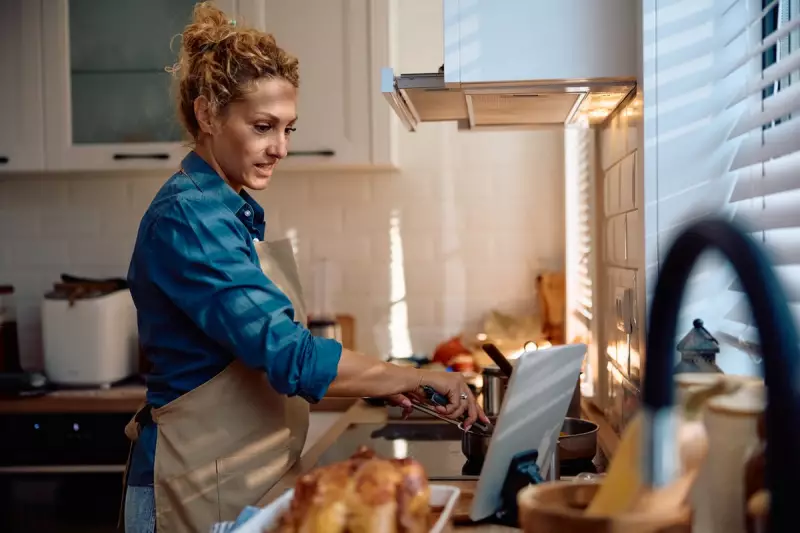
Thanksgiving is a cherished time for family, friends and feasting. However, amidst the joy of gathering and indulging in delicious food, it is absolutely essential to keep food safety at the forefront of your mind. Foodborne illnesses can swiftly put a damper on your celebrations, turning a day of gratitude into one of gastrointestinal distress.
As an immunologist and infectious disease specialist, I study how germs spread and, crucially, how to prevent them from doing so. In my courses, I teach students how to reduce microbial risks, including those associated with hosting a large Thanksgiving gathering, without becoming germophobes.
The Hidden Dangers on Your Holiday Table
The statistics are sobering. Foodborne illnesses sicken a staggering 48 million Americans – that's 1 in 6 people – each year. Holiday meals like Thanksgiving pose special risks because these feasts often involve large quantities of food, extended preparation times, buffet-style serving and mingling guests. These conditions create a perfect storm of opportunities for germs to spread.
This, in turn, invites a slew of unwelcome microbial guests such as Salmonella and Clostridium perfringens. While most people recover from infections with foodborne bacteria, around 3,000 Americans die from these illnesses annually. More routinely, these bugs can cause nausea, vomiting, stomach cramps and diarrhoea within hours or a couple of days after being consumed – which are decidedly no fun at a holiday celebration.
High-Risk Foods and Common Culprits
Most foodborne illnesses originate from raw or undercooked food and items left in the so-called 'danger zone' of cooking temperature – between 40 degrees and 140 degrees Fahrenheit – where bacteria multiply rapidly. Large-batch cooking without proper reheating or storage, coupled with cross-contamination of foods during preparation, are also major causes of disease.
Not all dishes carry the same level of risk. Turkey can harbour Salmonella, Campylobacter and Clostridium perfringens. Undercooked turkey remains a leading cause of Thanksgiving-related illness. Raw turkey drippings can also easily spread bacteria onto hands, utensils and countertops. And don't overlook the stuffing cooked inside the bird. While the turkey itself may reach a safe internal temperature, the stuffing often does not, making it a higher-risk dish.
Leftovers present another significant hazard. If stored for too long, reheated improperly, or cooled too slowly, they can become dangerous. If large pieces of roasted turkey aren't divided and cooled quickly, any Clostridium perfringens present might have time to produce toxins. This increases the risk of getting sick from snacking on leftovers – even reheated ones, since these toxins are not destroyed by heat. Indeed, each November and December, outbreaks involving this bacterium spike, often due to encounters with turkey and roast beef leftovers.
Essential Food Safety Tips for a Healthy Celebration
Many people believe washing their turkey will remove bacteria, but this is a potentially dangerous misconception. Since 2005, federal food safety agencies have advised against washing turkey or chicken. Despite this, a 2020 survey found that 78% of people still reported rinsing their turkey before cooking, often influenced by older recipes or family habits.
When you rinse raw poultry, water can splash harmful bacteria around your kitchen, contaminating work surfaces, utensils and nearby foods. If you do choose to wash your turkey, it is critical to immediately and thoroughly clean and disinfect the sink and surrounding area. A 2019 USDA study found that 60% of people who washed their poultry had bacteria in their sink afterward – and 14% still had bacteria in the sink even after cleaning it.
To ensure a safe and enjoyable holiday, follow these key guidelines:
- Wash your hands regularly: Before cooking and after touching raw meat, poultry or eggs, wash your hands thoroughly with soap and water for at least 20 seconds.
- Thaw turkey safely: The safest method is in the refrigerator, allowing 24 hours for every 4-5 pounds.
- Cook food to the right temperature: Use a food thermometer to ensure turkey and stuffing both reach 165°F. Do not rely on pop-up thermometers, as they can be inaccurate.
- Avoid cross contamination: Use separate cutting boards for raw meat and other foods.
- Be cautious with buffet-style serving: Limit the time food sits out to two hours or less.
- Stuff your turkey immediately before cooking: The USDA specifically warns against pre-stuffing the night before.
Thanksgiving should be a time of gratitude, not regret. By following these simple food safety practices, you can significantly reduce the risk of foodborne illness and help ensure a safe, healthy, and happy holiday for everyone gathered around your table.





